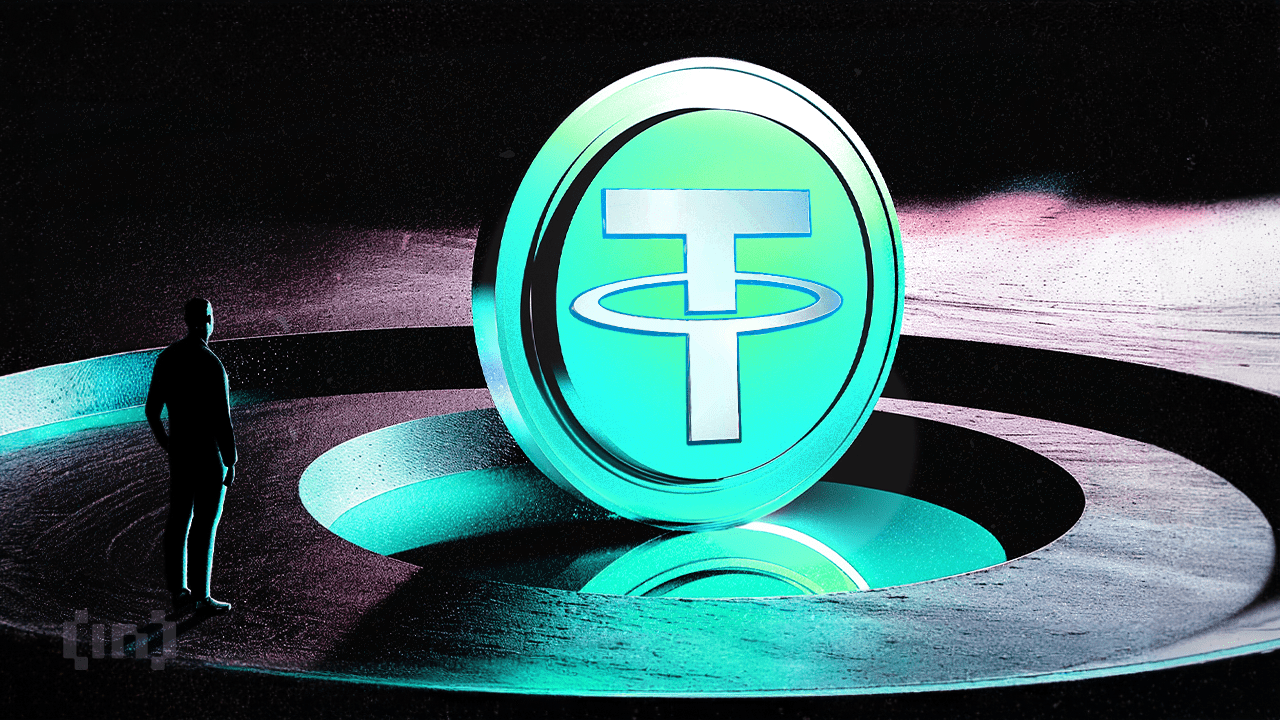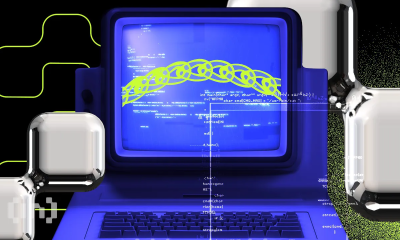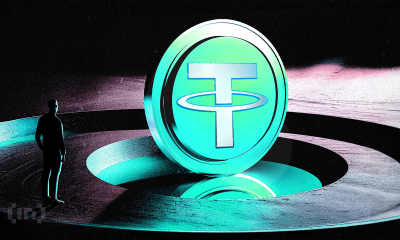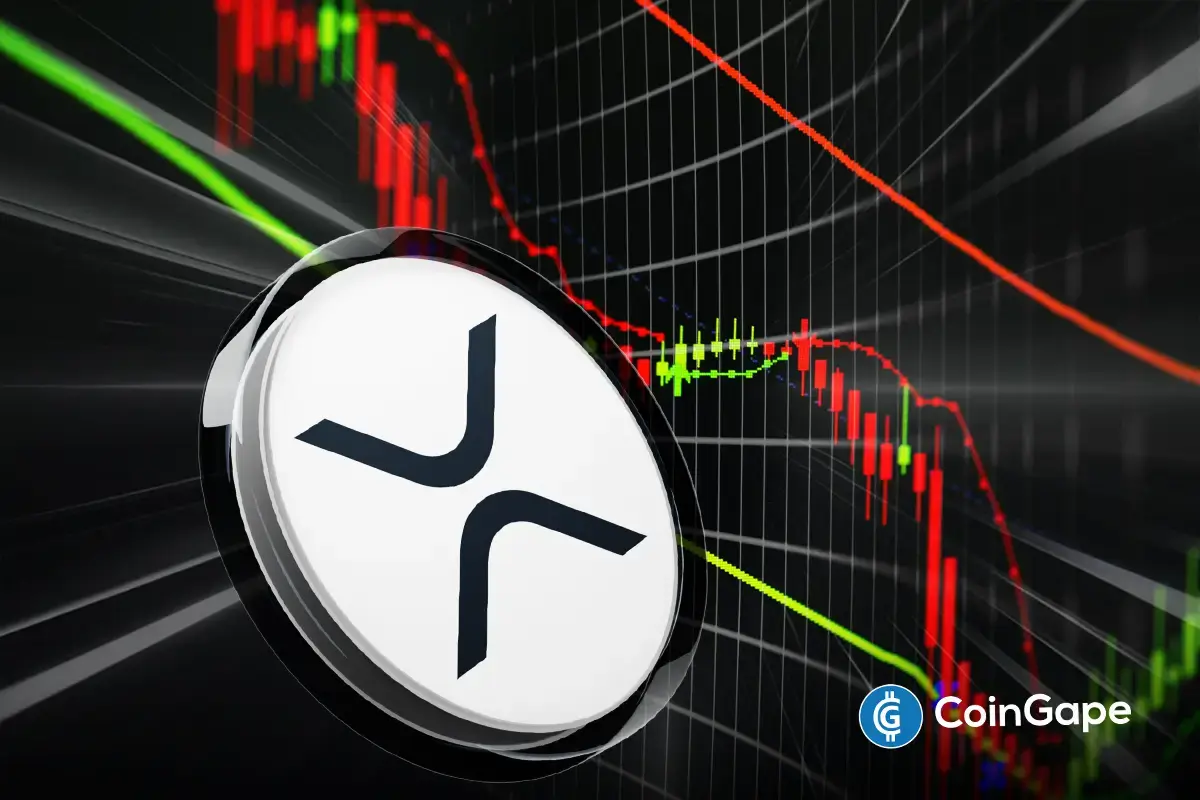Market
Tether Poses Major Audit Risks


Renowned advocacy organization Consumers’ Research raised concerns about Tether, criticizing the USDT stablecoin issuer for exposing users to significant risks due to its business model.
Despite these concerns, Tether has recently emerged as one of the most profitable crypto companies globally, reporting massive quarterly profits.
Consumers’ Research Slams Tether for Audit Risks
In a letter aimed at protecting consumers, addressed to Washington Governor Jay Inslee, Consumers’ Research criticized Tether for failing to conduct an audit to prove that its USDT stablecoin is backed 1:1 by the US dollar, despite promises dating back nearly 10 years.
The report described this failure as a serious risk, calling Tether and USDT a “disaster for consumers waiting to happen.”
“Tether’s continual failure to undergo an independent audit raises a distressing red flag for the company and its USDT product. Tether has promised that it would conduct a full audit since at least 2017 but has still failed to do so. In August 2022, its CEO stated that an audit was ‘likely months away.’ Years later, there is still no audit,” read a paragraph in the letter.
In addition to the lack of audits, Consumers’ Research criticized Tether for its history of doing business with bad actors, including sanctioned crypto exchanges like Garantex and BitPapa. The report also referenced a recent Wall Street Journal (WSJ) article, which accused Tether of “enabling a parallel economy that operates beyond the reach of US law enforcement.”
Read more: 9 Best Crypto Wallets to Store Tether (USDT)
The Consumers’ Research also detailed Tether’s “history of false claims,” mentioning key red flags, including but not limited to:
- In 2018, the US Department of Justice investigated Tether and Bitfinex’s involvement in crypto market manipulation.
- In 2019, New York determined that Tether moved hundreds of millions of dollars to conceal the loss of $850 million in client money.
- In 2021, Tether ceased trading activity in New York and paid $18.5 million in penalties.
- In 2022, Tether settled charges stemming from false statements allegedly made regarding its backing of USDT with US dollars with the Commodity Futures Trading Commission (CFTC).
- Also, in 2022, the SEC fined the law firm that claimed the US dollar-backed USDT for improper accounting purposes.
These reports, which raise concerns about Tether’s financial safeguards, accuse the firm of undermining America’s efforts to fight illicit entities.
“Tether has many of the same issues that FTX and Celsius had before their collapse – potentially costing consumers billions of dollars using deceptive and misleading marketing tactics that are inconsistent with the truth,” the report concluded.
Amidst these claims, it is worth mentioning that Tether is collaborating with Tron and TRM Labs to combat USDT criminal activity.
Tether Relies on Attestations for its Reserves
Tether CEO Paolo Ardoino stated in an April interview that the company relies on attestations for its reserves. He also revealed that Tether is seeking an auditor from among the top global accounting firms. However, the Big Four — Deloitte, PwC, EY, and KPMG — are reportedly hesitant, fearing potential damage to their reputations.
“So you are a Big Four auditing firm, and you have the entire banking industry that is your customer. Why would you risk 100,000 customers for a couple of stablecoins? Between the FTX disaster and the hacks, heists, and regulatory crackdowns in crypto, it hasn’t been easy to sign on as a client for one of those top accounting outfits,” Ardoino said.
Despite these concerns, Tether remains highly profitable. A recent report revealed that Tether outperformed BlackRock, with earnings of $6.2 billion compared to the asset manager’s $5.5 billion.
“How is it possible that a stablecoin issuer with around 100 employees made more money than the largest mutual fund company in 2023? You give them dollars. They give you Tether tokens, which are essentially entries on the blockchain. They use your dollars to buy US bonds yielding 5%. They use the yield to buy Bitcoin for their balance sheet. You do not need many people to do this, and it is an extremely profitable business model. Now you understand why BlackRock has taken an interest in crypto,” crypto analyst Frederik Lund explained.
Read more: A Guide to the Best Stablecoins in 2024
Indeed, Tether’s profits are bolstered by income from US Treasuries and mark-to-market gains on its Bitcoin and gold holdings, according to a recent blog post, which suggests these factors inflate the company’s financials. A quarterly attestation showed $118.44 billion backing Tether-related stablecoins — over $5 billion more than the circulating supply — indicating the stablecoins are fully backed by reserves.
In a recent legal victory, a UK court ruled that Tether’s USDT stablecoin qualifies as property. This decision, made by the High Court Justice for England and Wales, follows the UK Parliament’s move to recognize crypto, NFTs, and carbon credits as personal property under British law.
Disclaimer
In adherence to the Trust Project guidelines, BeInCrypto is committed to unbiased, transparent reporting. This news article aims to provide accurate, timely information. However, readers are advised to verify facts independently and consult with a professional before making any decisions based on this content. Please note that our Terms and Conditions, Privacy Policy, and Disclaimers have been updated.
Market
Despite an 18% Drop, XRP’s Exchange Supply Hits Lows—Bullish Setup Ahead?

Reason to trust

Strict editorial policy that focuses on accuracy, relevance, and impartiality
Created by industry experts and meticulously reviewed
The highest standards in reporting and publishing
Strict editorial policy that focuses on accuracy, relevance, and impartiality
Morbi pretium leo et nisl aliquam mollis. Quisque arcu lorem, ultricies quis pellentesque nec, ullamcorper eu odio.
XRP has been trading under pressure in recent weeks, losing much of the momentum it built during its late 2024 to early 2025 rally. After reaching highs above $3.40, the asset has experienced an 18.3% decline over the past month, reflecting broader market softness.
At the time of writing, XRP trades significantly below its peak at a price of $2.06, with subdued investor activity and falling market participation across both spot and derivatives markets.
Related Reading
XRP On-Chain Activity Slows, But Price Remains Relatively Stable
Amid XRP’s decline, a CryptoQuant analyst known as EgyHash has recently shared his analysis on the altcoin in a post titled, “XRP’s Market Paradox: With Ledger Activity Dipping 80%, Is a Rebound on the Horizon?”
According to EgyHash, XRP’s on-chain and futures market data presents a mixed picture—declining activity but resilience in price. EgyHash noted that XRP Ledger activity has fallen sharply since December, with the percentage of active addresses down by 80%.
Similar declines have been observed in the futures market, where open interest has dropped roughly 70% from its highs, and funding rates have occasionally turned negative.

He added that the Estimated Leverage Ratio, which gauges average user leverage by comparing open interest to coin reserves, has also dropped significantly.
Despite these indicators pointing to weakening momentum, the altcoin’s price has only declined about 35% from its peak. This is a milder correction compared to other assets such as Ethereum, which has fallen roughly 60% over the same period.
Additionally, the altcoin’s Exchange Reserve has continued to decline, reaching levels last observed in July 2023. Lower reserves typically suggest that fewer tokens are available for immediate sale, a factor that can help support prices during market downturns.

According to EgyHash, this trend, along with relatively stable pricing, could indicate growing long-term confidence in the asset.
Institutional Developments Could Strengthen Market Sentiment
While on-chain metrics remain a focus, institutional developments may also play a role in shaping XRP’s future trajectory. Hong Kong-based investment firm HashKey Capital recently announced the launch of the HashKey XRP Tracker Fund—the first XRP-focused investment vehicle in Asia.
Backed by Ripple as the anchor investor, the fund is expected to transition into an exchange-traded fund (ETF) in the future. The initiative is designed to attract more institutional capital into the XRP ecosystem.
HashKey Capital is launching Asia’s first XRP Tracker Fund—with @Ripple as an early investor.
This marks a major step in expanding institutional access to XRP, the third-largest token by market cap. 🧵👇
— HashKey Capital (@HashKey_Capital) April 18, 2025
HashKey Capital has also indicated that this collaboration with Ripple could lead to further projects, including tokenized investment products and decentralized finance (DeFi) solutions.
Related Reading
Vivien Wong, a partner at HashKey, emphasized the strategic value of integrating Ripple’s network with regulated investment infrastructure across Asia.
Although the altcoin faces near-term pressure, long-term developments, including decreasing exchange reserves and rising institutional interest, may support its recovery as the broader market stabilizes.
Featured image created with DALL-E, Chart from TradingView
Market
Matchain’s Petrix Barbosa Talks the Future of Digital Identity


In an engaging session during Paris Blockchain Week, BeInCrypto caught up with Petrix Barbosa, the innovative mind behind Matchain, a blockchain venture that’s reshaping how digital identity and data sovereignty are approached.
Barbosa, who transitioned from a successful career as a venture capitalist, where he managed investments across 250 projects, brings a wealth of experience and a unique perspective to the blockchain landscape. Petrix Barbosa’s insights reveal a compelling vision for the future of blockchain, focusing on user empowerment and innovative use of technology to solve enduring problems in digital identity and data management.
Petrix Barbosa Discusses Matchain and its Mission
Matchain is a layer 2 blockchain platform that primarily addresses the challenges of identity and data sovereignty. Our mission is to empower users by giving them control over their digital identities and data, thus ensuring that they’re the primary beneficiaries of their online presence.
Barbosa on His Pivot from Venture Capital
In my time as an investor, I witnessed many great ideas fail to reach their potential due to the lack of a substantial user base or poor market timing. This inspired me to transition from funding projects to creating a platform that not only serves my vision but also provides tangible solutions to widespread issues in the blockchain community—primarily, user engagement and application.
Matchain’s Innovations in the Area of Identity Sovereignty
Matchain introduces a novel approach to managing digital identity. Unlike traditional models where user data is siloed across various platforms, Matchain allows users to have a single digital identity that spans across both Web2 and Web3. This is crucial for enabling a seamless transition and interaction between these two worlds.
How Matchain Integrates Existing Web2 Infrastructure
Our platform acts as a bridge between the decentralized ecosystem of Web3 and the more traditional Web2 infrastructure. By allowing users to manage their digital identities across both platforms, we facilitate a smoother interaction that enhances user experience while maintaining high security and trust.
Future Developments From Matchain
Looking ahead, we aim to expand our user base significantly. Currently, we are backed by strategic partnerships, like the one with Paris Saint-Germain, which not only broadens our exposure but also integrates our technology into mainstream applications.
In the next two years, we plan to onboard millions of users, leveraging our innovative solutions to enhance their digital interactions.
Barbosa on Unique Challenges in Developing Matchain
The biggest challenge was shifting the focus from simply creating a blockchain solution to ensuring it was user-centric and capable of addressing real-world problems. This involved integrating AI to manage and analyze data effectively, ensuring that our platform could deliver personalized and contextually relevant experiences to users.
Matchain Over the Next Five Years
In five years, I envision Matchain at the forefront of blockchain technology, leading the charge in digital identity management and data sovereignty. Our platform will likely become a critical tool for users and companies looking to navigate the complexities of the digital age securely and efficiently.
Disclaimer
In compliance with the Trust Project guidelines, this opinion article presents the author’s perspective and may not necessarily reflect the views of BeInCrypto. BeInCrypto remains committed to transparent reporting and upholding the highest standards of journalism. Readers are advised to verify information independently and consult with a professional before making decisions based on this content. Please note that our Terms and Conditions, Privacy Policy, and Disclaimers have been updated.
Market
Base Launches Strong, But Content Coins Draw Doubt

Content Coins are a new trend gaining attention in the crypto space, especially on Base. They are positioned as digital content with value driven by culture and virality. Supporters see them as a new form of expression.
Critics say they’re just meme coins with a different name. Base is pushing the idea forward, hoping it helps the chain stand out from the rest.
Are Content Coins Really Different From Meme Coins?
Content coins are a new concept gaining traction within crypto communities, especially on Base chain. According to Base founder Jesse Pollak, a content coin “represents a single piece of content,” with the core idea being that the coin is the content and the content is the coin — no more, no less.
These tokens are often created in a specific context, either on platforms like Zora.
Essentially, creators design them to function as standalone pieces of digital content, driving the token’s value through cultural impact, virality, or meme-worthiness—rather than any utility or fundamental backing.

Despite the growing popularity of the term, not everyone is convinced. User Kash (@kashdhanda) dismissed the label, saying, “contentcoins are a silly name for memecoins”. He also pointed out that “memecoins are actually closer to financial content than they are to finance.”
David Tso (@davidtsocy), who works at Base, brings a more supportive spin, comparing content coins to “Instagram posts and TikToks that show their value in real time.”
Is Base Is For Everyone Just Another Meme Coin?
Base is for everyone was the first content coin officially launched and promoted by Base. It made an explosive debut, with a market cap nearing $18 million within its first few hours.
Shortly after its peak, the token plummeted nearly 75%. Since then, it has shown signs of recovery, with its market cap now hovering around $9.6 million.
The coin has gained significant traction in terms of activity, currently boasting nearly 21,000 holders, over 29,000 transactions in the last 24 hours, and a daily trading volume close to $9 million.

Base is using this momentum to push a broader narrative: that all content should live on-chain. Base is actively leveraging this philosophy, framing content coins as a new form of internet-native expression where each token represents a piece of digital culture stored permanently on the blockchain.
Yet, despite this push, Base is for everyone remains the only content coin to break out meaningfully—most others haven’t crossed the $100,000 market cap threshold. While the concept aims to separate itself from typical meme coins by embedding value in cultural relevance rather than pure speculation, many remain unconvinced.
Critics argue that content coins are merely meme coins in new packaging. Still, if the trend takes off, it could position Base to outperform other chains like Solana. It would do this by capturing this narrative and driving unique user activity to its ecosystem.
Disclaimer
In line with the Trust Project guidelines, this price analysis article is for informational purposes only and should not be considered financial or investment advice. BeInCrypto is committed to accurate, unbiased reporting, but market conditions are subject to change without notice. Always conduct your own research and consult with a professional before making any financial decisions. Please note that our Terms and Conditions, Privacy Policy, and Disclaimers have been updated.
-

 Market24 hours ago
Market24 hours agoBitcoin Price Gears Up for Next Leg Higher—Upside Potential Builds
-

 Altcoin18 hours ago
Altcoin18 hours agoEthereum ETFs Record $32M Weekly Outflow; ETH Price Crash To $1.1K Imminent?
-

 Market10 hours ago
Market10 hours agoPi Network Roadmap Frustrates Users Over Missing Timeline
-

 Market9 hours ago
Market9 hours agoSolana (SOL) Price Rises 13% But Fails to Break $136 Resistance
-

 Market21 hours ago
Market21 hours ago100 Million Tokens Could Trigger Decline
-

 Market19 hours ago
Market19 hours agoWhy Relying on TVL Could Mislead Your DeFi Strategy
-

 Market18 hours ago
Market18 hours agoCZ’s Plan to Streamline BNB Staking Could Boost DeFi
-

 Market11 hours ago
Market11 hours agoMEME Rallies 73%, BONE Follows
























